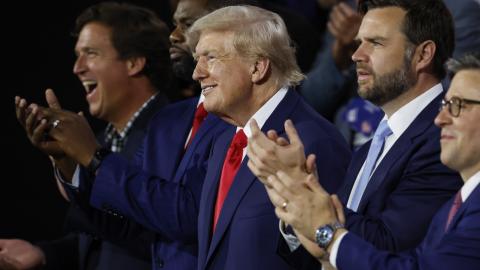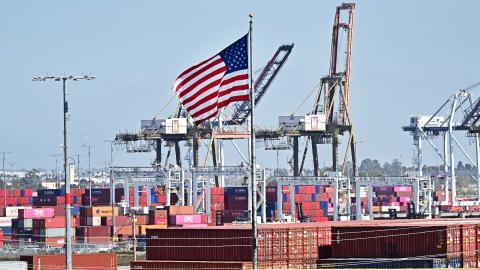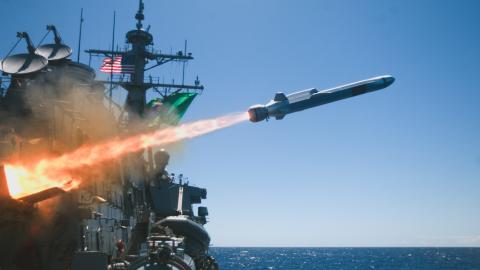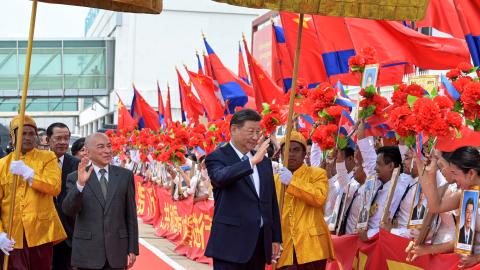On Monday, China’s Ministry of Commerce blasted a sharp warning to the world.
It came days after President Trump suggested countries may have to choose between the United States and China — and administration officials leaked a plan to leverage the president’s “Liberation Day” tariff threat to block Beijing from transshipping exports through other nations to the US.
Beijing’s response left little to the imagination: “If this happens, China will never accept it and will resolutely take countermeasures in a reciprocal manner.”
“Appeasement cannot bring peace, and compromise cannot win respect,” the ministry warned.
This moment transcends tariff rates or economic deals: Locked in a global trade war, the US and the Chinese Communist Party expect the rest of the world to pick sides in a new Cold War for the 21st century.
To be sure, Washington has significant leverage — nearly 20% of China’s gross domestic product relies on exports, and Beijing is the world’s leading exporter.
And while numerous US industries rely on this status, so do the Chinese people. In 2023, roughly 120 million jobs in China — nearly a fifth of the country’s work force — are in manufacturing.
More specifically, 10 million to 20 million Chinese workers rely on exports to the US, Goldman Sachs estimates.
Xi Jinping’s preference for production over consumption means he can’t quickly engineer an economic pivot to insulate the world’s second-largest economy from US tariffs.
Even so, advantages in a trade war have a short half-life. Tariffs are a blunt instrument that harm both the foreign exporter and the domestic consumer.
Meanwhile, America’s trade deficit is bolstered not only by cheap manufacturing abroad, but by the US dollar’s role as the world’s reserve currency.
Just as Xi cannot quickly pivot from a production economy to a consumption model, Trump cannot bring manufacturing back to the US in a matter of months.
So China is staring down the barrel of unemployment spikes, while America is bracing for higher prices and supply-chain disruptions — and the world is waiting to see who blinks first.
As pressure to negotiate rises on both sides, Xi is focused on one objective: peeling America’s allies and partners away from its economic — and, ultimately, its political and military — orbit.
It isn’t difficult to understand why. Aside from Washington and Beijing, the rest of the world makes up 44% of global GDP and 64% of trade.
Chief among these third parties is the European Union. Scholars at China’s Fudan University recently argued Beijing has “a certain strategic window” to shift the EU’s alignment, and its recent diplomacy throughout Europe reflects this calculation.
In other words, the trade war is merely one domain in the broader cold war unfolding between the US and the CCP.
There can be only one winner in these joined conflicts, and there are no easy decisions left.
The nations stuck between America and China are feeling that tension acutely, but the Trump administration is, too.
On paper, Trump’s gambit is sound: leverage Washington’s unique role in the global economy to finally punish China for its unfair and exploitative trade practices.
But Trump risks alienating America’s allies and partners if he deploys against them coercive tactics normally reserved for malign actors like the CCP.
Can America win a cold war with an adversary by threatening an economic war against its allies? The answer will determine the fate of the global economy in the near future — and the direction of geopolitics in this century.
At this inflection point, Trump needs to do more than wield economic power, though that is necessary: He must make an explicit case to the American people and the rest of the world that the CCP’s economic tentacles pose an existential threat to our lives and our core freedoms.
If the president goes small and continues to frame the US-China conflict in terms of trade alone, he risks losing.
If he goes big and persuades us of the CCP’s larger menace, he can reach untapped resolve among the American people — and will stand a better chance at keeping America’s friends on our side.
Finally, Trump needs to find tools beyond trade to ratchet up the pressure on Beijing. This skirmish may have started with tariffs, but it won’t end there.
China has already singled out key US industries for punishment, restricting rare-earth mineral exports to America to wreak havoc on our auto manufacturers.
Trump could respond in kind by delisting Chinese companies from US exchanges and sanctioning Chinese banks for a slew of violations.
This generational moment demands transcendent leadership.
If Trump meets it with clarity and candor and tells the truth about the CCP, he stands a chance at crafting a lasting legacy — and Xi knows it.
China might be able to survive a trade war, but its brittle regime will struggle to win a cold one.




















